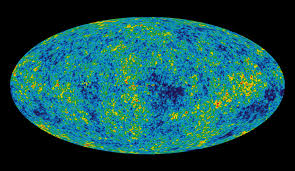RESEARCH AREAS
|
Exoplanets
Are Exoplanets Being Eaten by Stars by Tim Sanders, Fred Rasio,Sourav Chatterjee & Francesca Valsecchi
Abstract
As part of the Center for Interdisciplinary Exploration and Research in Astrophysics at Northwestern University (CIERA), the goal of this project is to investigate whether any of the currently known exoplanets is at its Roche limit separation. This is the separation within which it begins to be pulled so tightly by its parent star that it begins to loses its mass to the host star its orbiting.
As a first step, we inferred a universal density range for all exoplanets. We compiled a list of exoplanets with known masses, radii and thus densities. Preliminary results show that the density of exoplanets is between .01 g/cm^3 to 600 g/cm^3.
Next, we used a list of Kepler's exoplanet candidates (obtained from the NASA Exoplanet Archive). Specifically, we used the known planetary radius, stellar mass, and the semi-major axis, and computed the planetary density assuming that the radius was Roche Lobe filling. We then compared the densities thus obtained with the trusted list of densities to figure out if any of the Kepler candidates is an exoplanet at its Roche limit.
RADIO ASTRONOMY:
UNDERSTANDING GALAXY CLUSTER MKW10 by Tim Sanders, Henry Swain, Kim Coble, Jessica Rosenberg
Abstract
As part of the Undergraduate ALFALFA Team (UAT), we are studying the galaxy cluster MKW 10 (RA = 175.454, Dec = 10.306, z ~ 0.02). This cluster has been observed in HI by ALFALFA. We used SDSS and NED to search for optical counterparts. By comparing data at multiple wavelengths, we hope to understand the structure, environment, and star formation history of this cluster. Following the techniques of others involved in the groups project and using the program TOPCAT to manipulate the data, we explored both the spatial and velocity distributions to determine cluster membership. We have determined that the region of interest consists of 39 galaxies from SDSS data, 63 galaxies from SDSS data and that these galaxies are mostly spiral in shape. We began our work after taking part in the UAT winter workshop at Arecibo Observatory in Puerto Rico.
COSMOLOGY MODULES:
Big Ideas in Cosmology by Tim Sanders, Kim Coble, Kevin Mclin, Janelle M. Bailey, Anne J. Metervier & Lynn Cominsky
Abstract
Powerful new observations and advances in computation and visualization have led to a revolution in our understanding of the structure, composition, and evolution of the universe. These gains have been vast, but their impact on education has been limited. Informed by our research on student learning, our research group has created a series of web-based cosmology learning modules. The goal of the curriculum is to increase the knowledge of general education college students who take courses in cosmology by applying new and innovative techniques to help the students better understand scientific concepts and reasoning processes. My role was to help debug the curriculum for students. I read through each module, answered conceptual questions, tested interactive activities, and played videos that would increase my understanding of the universe. I also completed a wrap up component, homework, and a survey from each chapter. I reported mistakes within the text and activities and also gave feedback on each of the chapters to make sure that the material was useable and comprehendible for students.
Physics Teacher Education Coailition (PhysTECH):
Reflections on Early Physics Teaching Experiences in the Chicago State University Teacher Immersion Course by TIM SANDERS, RYAN GOODE, KENNETH OFODILE, NIYA TAYLOR, JENNIE PASSEHL, KARA WEISENBURGER, MEL SABELLA
Abstract
The Teacher Immersion Course at Chicago State University (CSU) provides early teaching experiences for prospective pre service physics teachers. The course, led by two Chicago Area High School Physics Teachers gives our students an opportunity to gain authentic physics teaching experience in the high school setting. Science majors who participate in the course are involved in designing, implementing, and reflecting on a lesson they give, at the end of the semester, on a specific physics concept. The program provides students with a meaningful way to determine, early on, if teaching is a possible career option for them. The strong collaboration with in service teachers allows the opportunity for additional mentorship of future high school physics teachers through-out their pre-service training and challenging induction year. In this poster we describe the course and present student reflections on their experiences in lesson design and implementation. Supported by the APS PhysTECH Program and Chicago State University
|




|